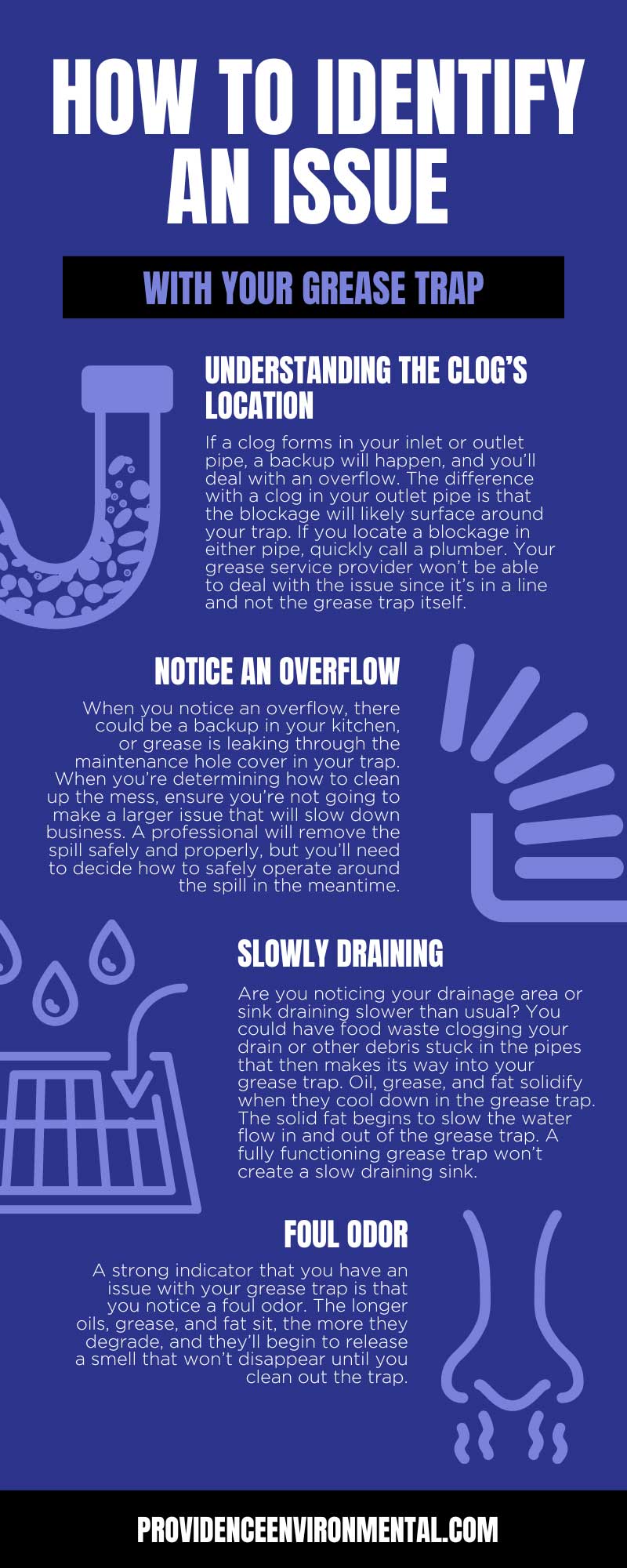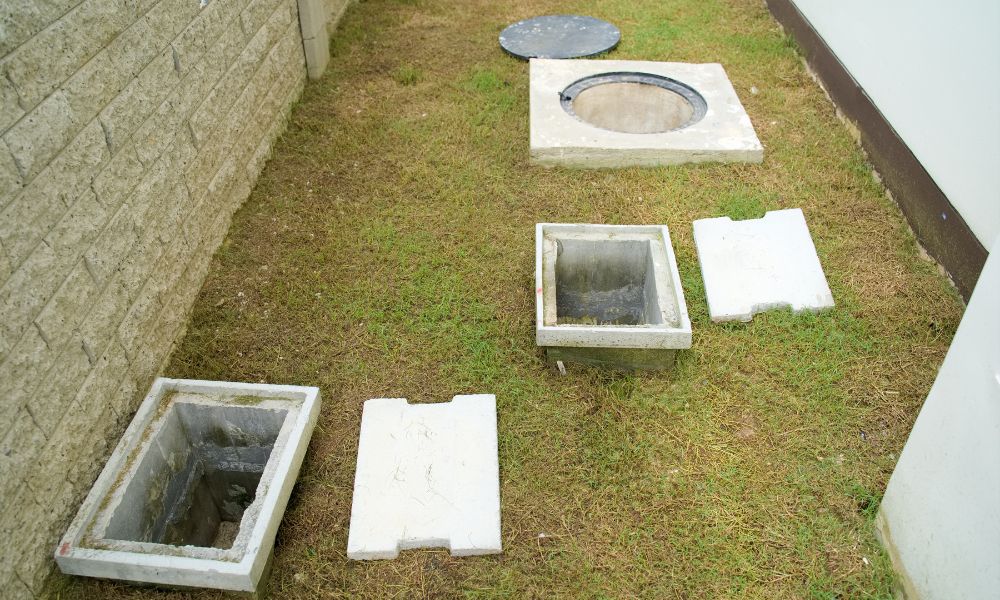Grease traps are vital parts of commercial kitchens. You can end up with a giant headache of a situation if you aren’t aware of the problems that could arise with a grease trap. These problems could also cost a pretty penny. There are ways you can identify grease trap issues before they become out of control.
Understanding the Clog’s Location
One of the most vital pieces of information is understanding where the clog formed. Let’s explore how the grease trap functions so that you can pinpoint the problem.
How Does It Work?
A grease trap, or grease trap proper, is a device that collects any waste that moves down the drain. It connects to an inlet and outlet pipe where the trap catches food waste while allowing the water to flow into the city sewer system. The waste settles into the bottom of the trap and, ideally, in a way that you can easily clean out later.
All Traps Are Different
Are you able to locate your grease trap? Most are outside the building, covered by a utility cover. In comparison, some businesses have them under the sink indoors. The indoor grease trap options are much smaller than the outdoor versions. Therefore, you’ll likely need to have the tinier indoor model serviced more often, as it will face more problems. You may want to explore installing an outdoor grease trap if your indoor trap continues to have issues.
Does Clog Location Matter?
If a clog forms in your inlet or outlet pipe, a backup will happen, and you’ll deal with an overflow. The difference with a clog in your outlet pipe is that the blockage will likely surface around your trap. If you locate a blockage in either pipe, quickly call a plumber. Your grease service provider won’t be able to deal with the issue since it’s in a line and not the grease trap itself.
You can call your grease service provider when you’re dealing with a clog in the grease trap. They’ll come out and clean or pump out your trap immediately before the blockage creates a more significant problem.
Notice an Overflow
One obvious sign that your grease trap has a problem is visible overflow. The issue has become so severe that you will need to hire a plumber to help fix it. You can also contact your provider to assist with the fix.
When you notice an overflow, there could be a backup in your kitchen, or grease is leaking through the maintenance hole cover in your trap. When you’re determining how to clean up the mess, ensure you’re not going to make a larger issue that will slow down business. A professional will remove the spill safely and properly, but you’ll need to decide how to safely operate around the spill in the meantime.
Providence Environmental offers oil removal in South Carolina. Our trustworthy and reliable workers will ensure the job is done right. After addressing the mess, regularly servicing your grease trap will ensure everything remains in proper working order. Proper maintenance could prevent the trouble from happening in the first place.
Slowly Draining
Are you noticing your drainage area or sink draining slower than usual? You could have food waste clogging your drain or other debris stuck in the pipes that then makes its way into your grease trap. Oil, grease, and fat solidify when they cool down in the grease trap. The solid fat begins to slow the water flow in and out of the grease trap. A fully functioning grease trap won’t create a slow draining sink.
Ensure you’re watching out for any slow-moving drainage to avoid this problem becoming more significant. It’s crucial to act when you notice a slow-draining sink. Locate the clog, and if it’s in one of the pipes or trap, contact your grease service provider along with a local plumber to correctly clean up the clog.
Foul Odor
A strong indicator that you have an issue with your grease trap is that you notice a foul odor. The longer oils, grease, and fat sit, the more they degrade, and they’ll begin to release a smell that won’t disappear until you clean out the trap.
One way to prevent this odor from arising is regularly cleaning your trap. Remember that you may encounter an odor immediately after professionals clean the trap. Don’t worry; this smell will subside after the grease trap fills up.
Allowing Food Waste To Go Down the Drain
Unfortunately, there are some ways to practically guarantee a clog in your commercial kitchen’s grease trap: pour used oil and food waste directly into the sink. Not following best practices will allow significant problems to arise.
Never, under any circumstances, dump food waste or cooking oil down the drain.
First, cooking oil hardens as it cools, creating a giant clog in your pipes. You may feel tempted to wash it down since it’s a liquid like water, but don’t give into the temptation. Educate your staff on this rule as well and emphasize its importance. It could create an expensive problem, delay productivity, and interrupt the workday. There’s no positive outcome when cooking oil penetrates the drain. If you need to, put up signs to remind workers of this crucial rule.
What To Do Instead
The consequences of dumping any debris down the drain are monumental. It may not be intentional, but it could still end up costing your business. Any food waste belongs in the garbage, not your drain. Since a grease trap pipe is typically four inches, it leaves room for debris to sneak past and end up in the drain pipe. Avoid expensive plumbing issues and minimize the amount of debris and waste that goes down into the grease trap.
Invest in food drain covers to stop waste, and ensure solids, such as forks, straws, and gloves, end up in the garbage can.
One of the most important things you can do is provide regular maintenance for your grease trap. You’ll notice fewer issues happening with the trap and peace of mind. Your provider can plan how often they’ll need to provide their services to ensure your business has a functioning grease trap.


